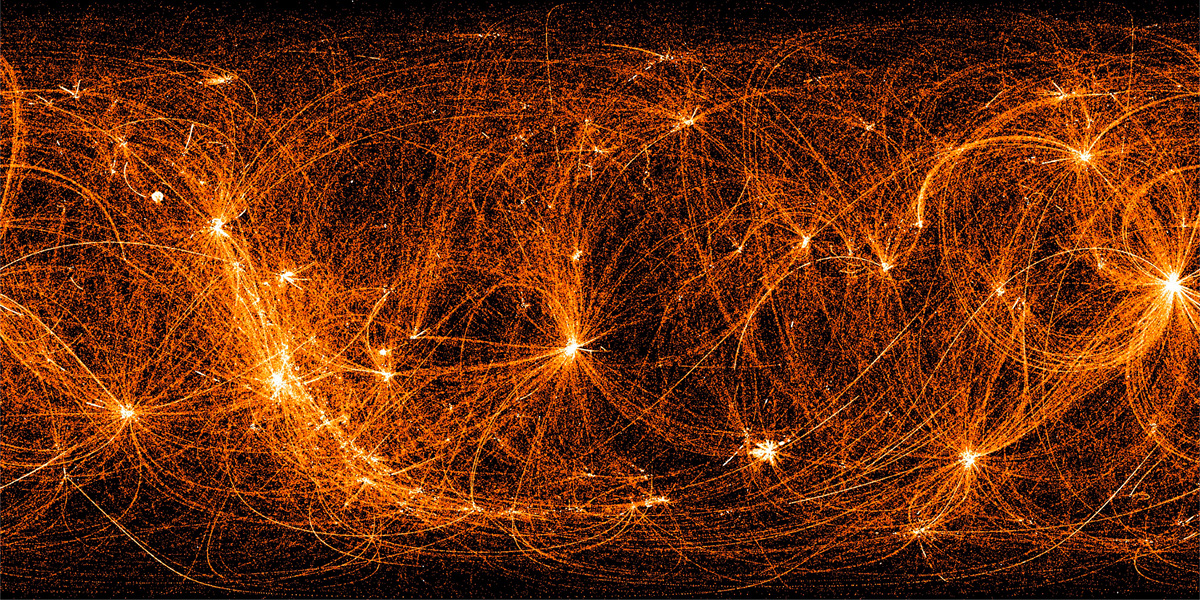2019 June 1

NICER at Night
Image Credit:
NASA,
NICER
Explanation:
A payload on board the International Space Station, the
Neutron star Interior Composition Explorer
(NICER) twists and turns
to track cosmic sources
of X-rays as the station orbits planet Earth every 93 minutes.
During orbit nighttime,
its X-ray detectors remain on.
So as NICER slews from target to target bright arcs and loops are
traced across this all-sky map made from 22 months of NICER data.
The arcs tend to converge on
prominent bright
spots, pulsars in
the X-ray sky that NICER regularly targets and monitors.
The pulsars are spinning neutron stars that
emit clock-like pulses of X-rays.
Their timing is so precise it can be
used for
navigation, determining spacecraft speed and position.
This NICER X-ray, all-sky, map is composed in coordinates with the
celestial equator
horizontally across the center.